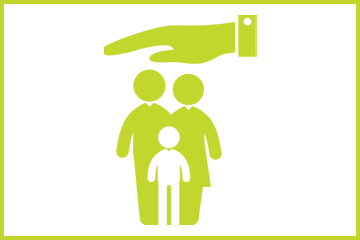
4 Signs The UK Housing Market Will Hold Up Despite High Mortgage Rates
New sales activity in the housing market is holding up in the last week. High mortgage rates do not hit all buyers equally and I remain hopeful that borrowing costs will be lower as we start 2023.
Key Takeaways
- It’s early days, but I remain optimistic that mortgage rates will be lower as we start 2023
- There are minimal chances of negative equity after strong post-pandemic price growth
- Sales are still being agreed in the last 2 weeks as those keen to move and with cheap mortgages in place continue with sales
- Higher mortgage rates do not hit everyone: 30% of sales are with cash and a further 20% are with smaller-sized mortgages
- For now, it’s like Christmas has come early for the housing market with lower activity from new buyers in the aftermath of the mini-budget.
1. I’m Hopeful Mortgage Rates Will Start To Fall Back Soon
This week’s reversal of tax cuts announced in the mini budget seems to have calmed the markets. Borrowing costs are starting to fall for government debt and the all-important interest rates that set the cost of a fixed-rate mortgage.
Mortgage rates for new borrowers remain over 6% but I believe there are very early signs that this could start to fall back further in the weeks ahead.
This is important as the outlook for the UK housing market next year really hinges on the level of mortgage rates for buyers entering the market from January 2023 onwards.
Our analysis has always suggested that mortgage rates of 4% were manageable for most buyers. Rates reaching 5% or higher would be more of a tipping point with the likelihood of some localised price falls and fewer sales.
Looking ahead, what really matters now is the outlook for inflation – in particular, how much more central banks need to increase the Bank Rate to bring inflation under control in the UK. We will know more in the next 2 weeks.
As soon as we get signs that inflation is starting to peak, the financial markets should start to take a very different outlook on borrowing costs. This will start to reduce the cost of 5-year mortgage rates which account for more than 60% of all new loans.
It’s early days, but I remain optimistic that mortgage rates will be lower than they currently are as we enter 2023.
However, home buyers need to realise that sub-2% mortgage rates are a thing of the past, enabled by cheap money over the last decade. 4% is likely to be the new normal for mortgage rates.
2. There Are Minimal Chances Of Negative Equity
Strong UK-wide house price growth over the pandemic has added to the equity buffer for homeowners. New borrowers have not relied on large mortgages to pay more for homes.
There is a huge equity buffer to absorb any reductions in sale price, and this will allow for the hit to buying power for new home buyers.
Find out how much your home is worth
We calculate that a nationwide 15% reduction in house prices from today’s levels would result in very few cases of negative equity for mortgaged sales up to the end of 2021.
This highlights how the UK housing market has become increasingly equity driven and is much less dependent on high loan-to-value (LTV) borrowing over 90%.
3. New sales are still being agreed despite uncertainty
Looking back over the last week’s activity from homebuyers on Zoopla, we see that interest from new buyers continues to weaken – it’s down a further 8%. Those who haven’t managed to arrange cheaper mortgages are stepping back from the market, creating a sense that the Christmas seasonal slowdown has started early.
However, sellers and buyers continue to agree new sales across the UK. The rate at which new sales are being agreed is slowing – down 25% on this time last year – but sales have not stalled. This shows that there are committed buyers in the market who want to press on and secure a sale.
Mortgage rates are important for many buyers, but life-related decisions and other pressures will continue to bring a flow of buyers and sellers into the market. However, this is and will be at a slower pace than earlier in 2022.
4. 30% Of Sales Are Cash Buyers
Higher mortgage rates are deterring buyers who need a large mortgage to buy a home. But not everyone needs a large mortgage.
3 in every 10 home sales in the UK were paid for in cash last year. A further 20% of buyers use smaller-sized mortgages, and the increase in borrowing costs will be much smaller and less of a disincentive to move for them.
Cash buyers account for almost 40% of sales in the South West. But in London where prices are highest, less than 1 in 5 sales are paid for without a mortgage.
We have seen the proportion of cash buyers increase over the pandemic with more moves by older homeowners and those who have paid off their mortgage. Over half of all homeowners don’t have a mortgage at all.
However, most people buying a home do rely on a mortgage so the increase in rates is important for the UK housing market outlook.
By Richard Donnell of Zoopla
October 2022






